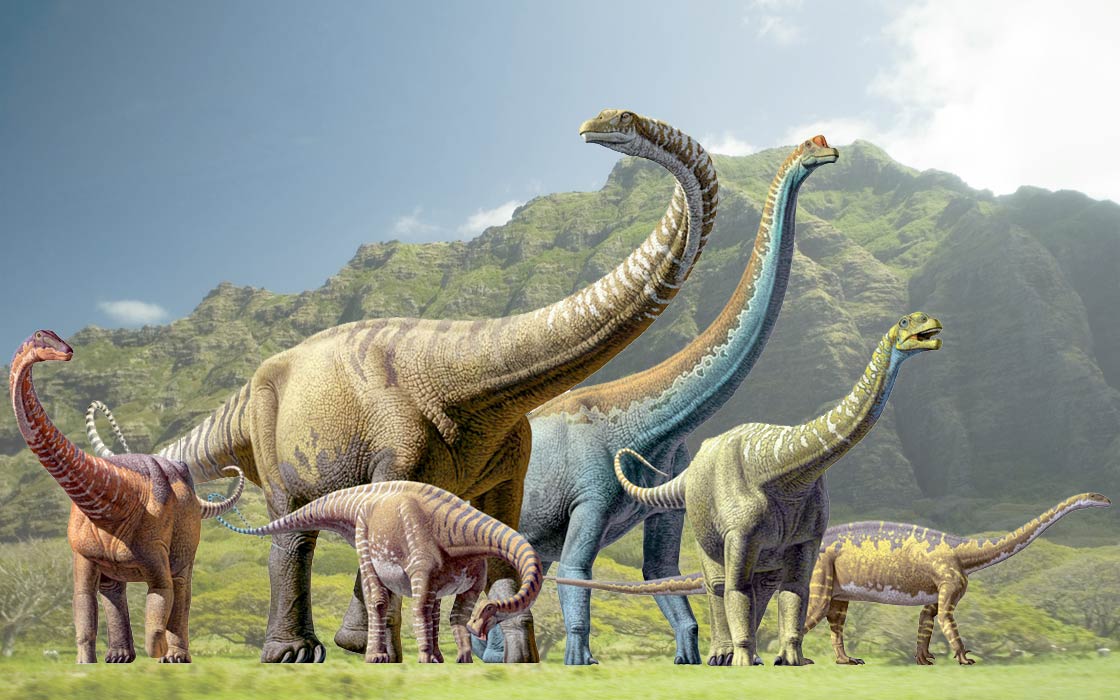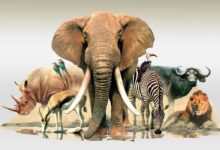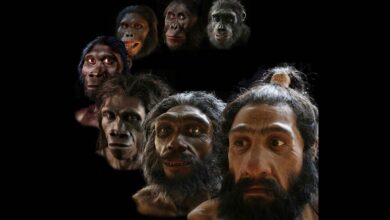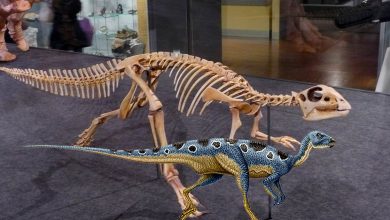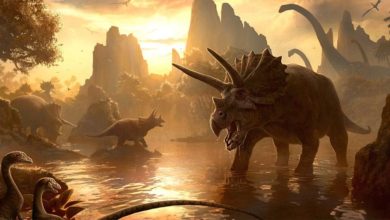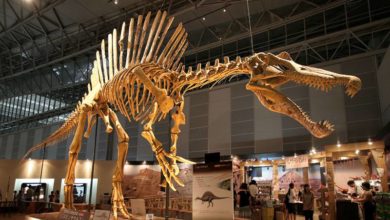The longest dinosaurs Top 100
The longest dinosaurs Top 100
The article titled “The Longest Dinosaurs” is a discussion of some of the largest and most impressive dinosaurs to have ever roamed the Earth. This article will explore the different dinosaur groups that included long species, with a particular focus on sauropods. Sauropods were a group of long-necked, herbivorous dinosaurs that included some of the largest animals to ever walk the Earth. The article will also discuss the controversy over which dinosaur is actually the longest, and the different methods scientists use to estimate dinosaur size. The article aims to provide a fascinating insight into these incredible creatures, and highlight their ongoing importance in the field of paleontology.
The largest dinosaurs Top 100
Source: Dinosaur Database
Source: Dinosaur Database
Dinosaurs and their importance
Dinosaurs were a diverse group of reptiles that roamed the Earth millions of years ago. They are known for their unique features such as their large size, sharp teeth, and scaly skin. Dinosaurs first appeared around 230 million years ago and existed for about 165 million years before they were wiped out by an extinction event around 65 million years ago.
Dinosaurs are important because they represent an important part of Earth’s history and evolution. They provide valuable insights into the behavior, ecology, and biology of animals from the past, and help scientists to understand the evolution of life on Earth. By studying dinosaur fossils, researchers can reconstruct the ecosystems of the past, understand how ancient animals adapted to their environments, and gain insight into how life on Earth has changed over time.
In addition to their scientific significance, dinosaurs have captured the imagination of people around the world for generations. They are a symbol of power, mystery, and fascination, and have inspired countless books, movies, and cultural references. By studying dinosaurs, we not only learn about the past but also continue to be inspired by these incredible creatures today.
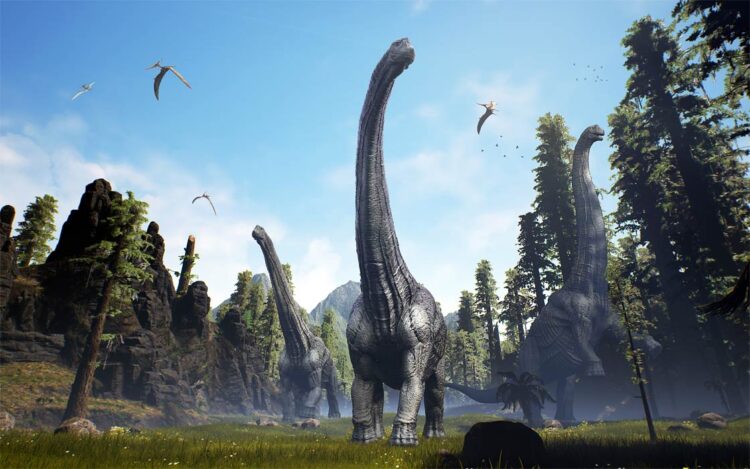
What makes a dinosaur “long”?
How dinosaur length is measured?
Dinosaur length is typically measured from the tip of the snout to the end of the tail, in a straight line. This measurement is known as the “total length” of the dinosaur. In some cases, the length of the neck or legs may also be included in the measurement, depending on the specific dinosaur and the context of the research.
To determine the length of a dinosaur, researchers will often use fossils as a reference point. For example, they may measure the length of a leg bone or the height of a vertebra, and use this information to estimate the overall size of the animal. In some cases, they may also use computer modeling and 3D scanning techniques to create a digital model of the dinosaur, which can be used to estimate its size.
It is important to note that while total length is a common method of measuring dinosaur size, it is not always the most accurate. In some cases, dinosaurs may have had particularly long necks or tails that were difficult to measure, or their skeletons may not have been fully preserved. In these cases, scientists may use other measurements, such as height or weight, to estimate the size of the animal. Ultimately, the exact method of measuring dinosaur length will depend on the specific research question and the available data.
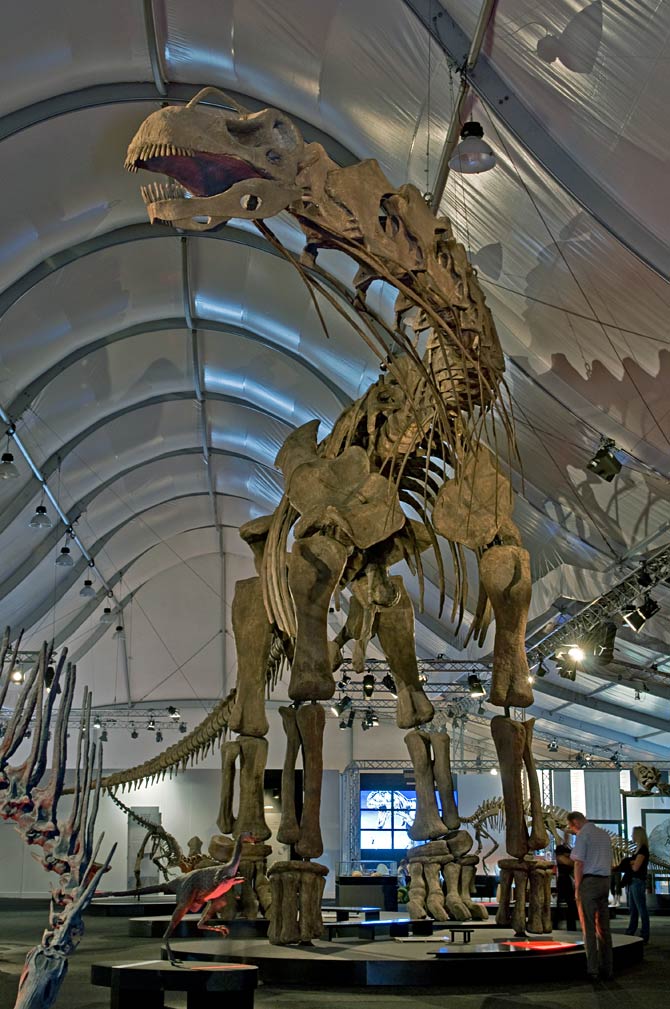
Comparison of different dinosaur lengths and what is considered “long”
Dinosaurs varied greatly in size, with some species measuring only a few centimeters long, while others were more than 30 meters in length. The exact definition of what qualifies as a “long” dinosaur can vary depending on the context, but generally, any dinosaur that was particularly large in size can be considered long.
In terms of size comparison, the smallest dinosaurs, such as the tiny bird-like Microraptor, were only about 95 centimeters in length, while the largest dinosaurs, such as the sauropod Argentinosaurus, were estimated to be around 30-35 meters in length. In between these extremes, there were a wide variety of dinosaurs that ranged in size from a few centimeters to over 15 meters in length.
When it comes to determining what qualifies as a “long” dinosaur, there is no hard and fast rule. However, scientists generally consider any dinosaur that was particularly large in size, especially in relation to other dinosaurs in its group, to be “long”. For example, while the 6-meter-long theropod Carnotaurus may not be as long as some sauropods, it is still considered to be a relatively long dinosaur because it was much larger than other theropods in its group.
The definition of what qualifies as a “long” dinosaur will depend on the specific context of the discussion and the relative size of the dinosaur in question.

The longest sauropods
Sauropods and their characteristics
Sauropods were a group of herbivorous dinosaurs that lived during the Mesozoic Era, between 201 and 66 million years ago. They were characterized by their long necks and tails, small heads, and massive bodies. Sauropods were some of the largest animals to ever walk the Earth, with some species reaching lengths of up to 30 meters and weights of up to 80 tons.
In addition to their large size and distinctive body shape, sauropods also had a number of other unique characteristics. For example, they had small, peg-like teeth that were adapted for stripping vegetation rather than chewing it. To process this food, they likely had large digestive systems and microbial symbionts in their guts to help break down tough plant matter.
Sauropods also had a distinctive posture, with their necks held upright and their heads held far above their bodies. This posture was likely maintained by a number of adaptations, including air sacs in their bodies that helped to reduce the weight of their necks and tails, and specialized cervical vertebrae that allowed for a wide range of movement in their necks.
Despite their massive size, sauropods are thought to have been relatively peaceful animals that lived in herds and were largely free from predation. Some species may have also had the ability to produce loud calls or communicate with each other through infrasonic sounds. Today, sauropod fossils are some of the most well-known and recognizable examples of the incredible diversity of life that once existed on our planet.
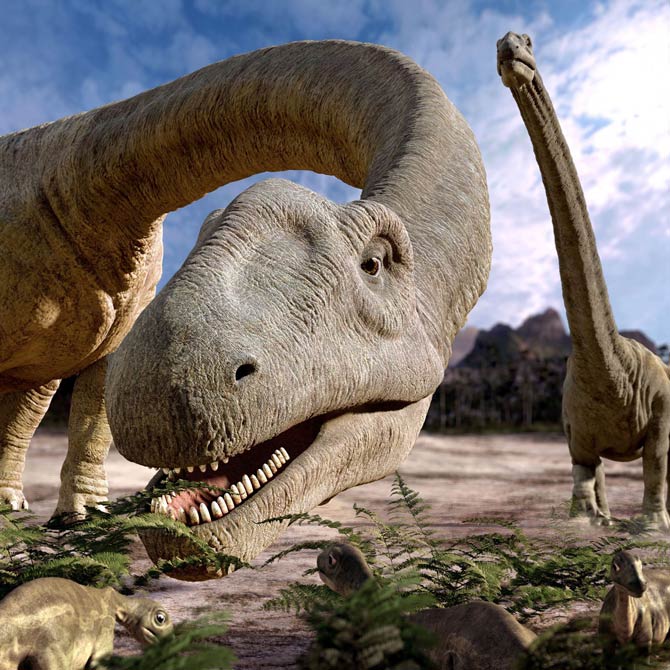
Description of the longest sauropods
The sauropods were a group of long-necked, herbivorous dinosaurs that included some of the largest animals to ever walk the Earth. Within this group, there were several species that were particularly notable for their immense size, including Argentinosaurus and Patagotitan.
Argentinosaurus
Argentinosaurus is perhaps the best-known of these giant sauropods. This dinosaur lived during the Late Cretaceous period, around 90 million years ago, in what is now South America. Estimates of its length vary, but it is generally believed to have been around 35 meters long and weighed up to 75 tons. Its massive size would have allowed it to reach vegetation that was inaccessible to smaller herbivores.
Patagotitan mayorum
Patagotitan mayorum is another sauropod from South America that is known for its impressive size. This dinosaur lived during the Late Cretaceous period, around 100 million years ago, and is believed to have been up to 31 meters long and weighed up to 55 tons. Its fossils were first discovered in Argentina in 2012, making it one of the most recently discovered giant sauropods.
Other giant sauropods
Other notable long sauropods include Supersaurus vivianae, which lived in North America during the Late Jurassic period and is believed to have been up to 36 meters long, and Futalognkosaurus, which lived in what is now Argentina during the Late Cretaceous period and was previously believed to have been up to 32 meters long, but modern estimates indicate that it measured rather 26 meters.
These giant sauropods likely had a number of adaptations that allowed them to support their massive size, including specialized vertebrae and skeletal structures, as well as unique adaptations in their circulatory and respiratory systems. Despite their impressive size, these dinosaurs were likely slow-moving animals that relied on their size and strength to deter predators and reach high-growing vegetation.
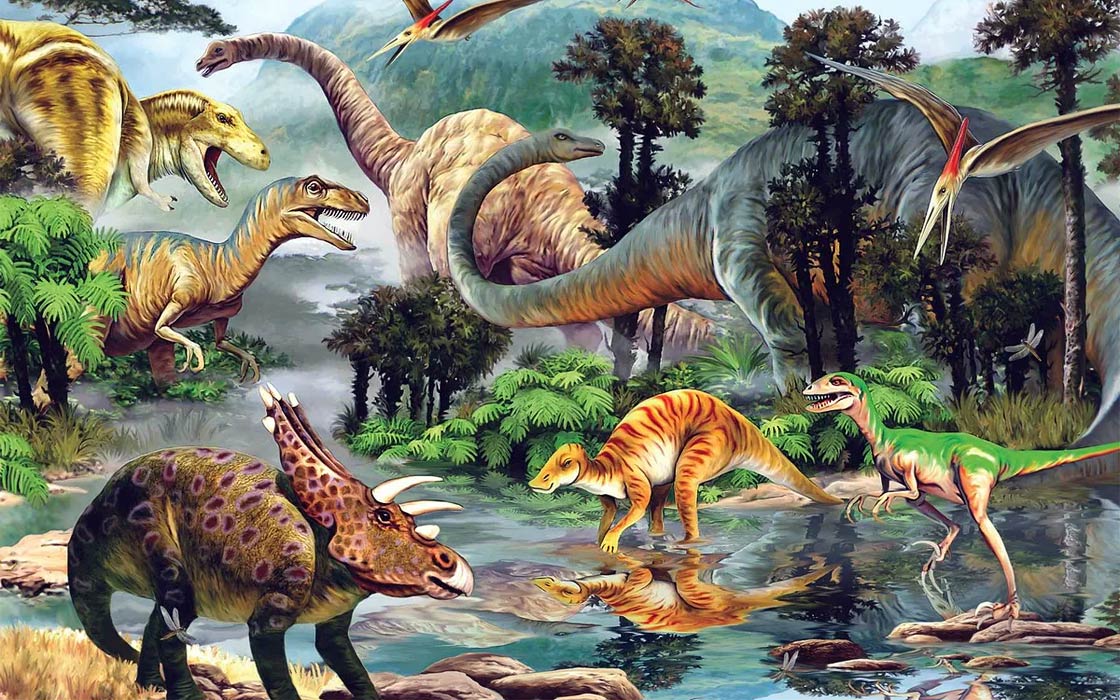
How did these sauropods grow to such enormous size?
The sauropods, including the longest species such as Argentinosaurus and Patagotitan, were able to grow to such massive sizes due to a combination of factors, including their unique anatomy, feeding habits, and life history.
One key factor that allowed sauropods to grow so large was their efficient feeding strategy. These dinosaurs had small heads and long necks that allowed them to reach high-growing vegetation that was inaccessible to other herbivores. They also had a long, muscular tongue that they could use to strip leaves from trees and bushes. This feeding strategy allowed sauropods to consume large amounts of vegetation with relatively little effort.
Sauropods also had unique skeletal structures that allowed them to support their massive size. For example, they had air sacs in their bodies that helped to reduce their weight, and their bones were filled with a network of small air pockets that made them lighter and stronger. They also had elongated cervical vertebrae that allowed for a wide range of motion in their necks, which in turn helped to distribute their weight more evenly.
Another factor that contributed to the massive size of sauropods was their long life span. These dinosaurs grew slowly but steadily throughout their lives, allowing them to reach their enormous sizes over the course of many decades. Some studies have estimated that sauropods may have taken as long as 100 years to reach their full size.
The combination of their unique feeding habits, skeletal structures, and long life spans allowed sauropods to grow to sizes that were unparalleled in the animal kingdom. These dinosaurs were among the most impressive creatures to ever live, and their legacy can still be seen in the fossils they left behind.
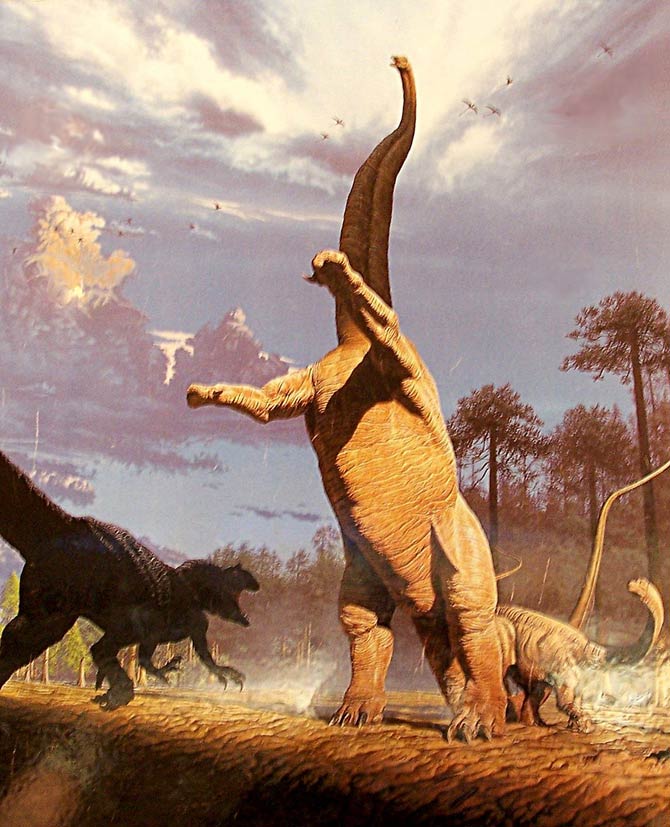
Other long dinosaurs
Introduction of other dinosaur groups that included long species, such as theropods and ornithomimosaurs (Ornithomimosauria)
While the sauropods are perhaps the most well-known group of long dinosaurs, they were not the only ones to grow to impressive sizes. Other groups, such as the theropods and ornithomimosaurs, also included species that were notable for their elongated bodies and impressive lengths.
Theropods were a group of carnivorous dinosaurs that included some of the most fearsome predators to ever walk the Earth, such as Tyrannosaurus rex and Giganotosaurus. While many theropods were relatively small (e.g. Velociraptors), some species were quite large, with some estimates suggesting that the largest theropods may have reached lengths of up to 14 meters (Spinosaurus aegyptiacus).
Ornithomimosaurs, on the other hand, were a group of bird-like dinosaurs that were adapted for running and likely fed on a diet of plants and small animals. Some species, such as Gallimimus, were particularly elongated, with long, slender bodies that allowed them to run quickly and efficiently. These dinosaurs were believed to have reached lengths of up to 6 meters (Gallimimus bullatus), making them some of the longest ornithomimosaurs.
While the sauropods remain the most iconic group of long dinosaurs, the theropods and ornithomimosaurs are important reminders that there were many other dinosaur groups that were adapted for impressive lengths and sizes. The diversity of these creatures is a testament to the incredible range of adaptations and evolutionary strategies that were present during the age of the dinosaurs.
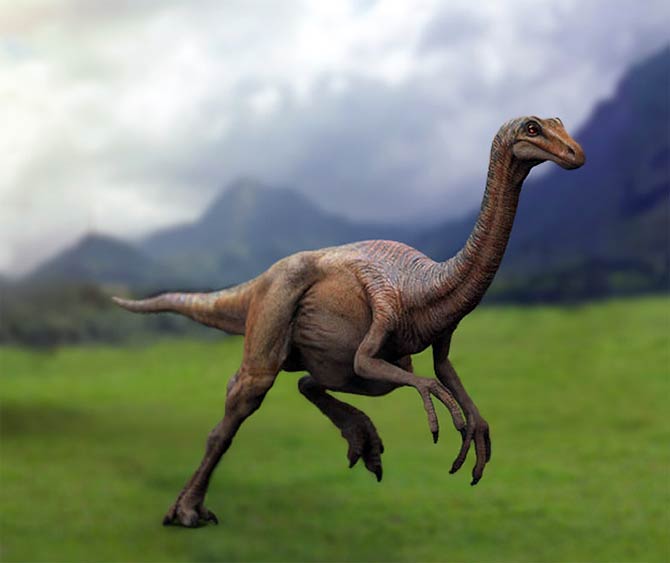
Description of some notable examples of long dinosaurs in each group
Sauropods
- Argentinosaurus: one of the largest known sauropods, estimated to have reached lengths of up to 35 meters.
- Patagotitan: another giant sauropod, estimated to have reached lengths of up to 37 meters.
- Supersaurus: while not as well-known as some other sauropods, Supersaurus was still an impressive creature, with estimates suggesting it may have reached lengths of up to 34 meters.
Theropods
- Spinosaurus: one of the largest known theropods, with estimates suggesting it may have reached lengths of up to 14 meters.
- Giganotosaurus: another large theropod, estimated to have reached lengths of up to 12.6 meters.
- Allosaurus: a well-known theropod that was one of the top predators of its time, with estimates suggesting it may have reached lengths of up to 10 meters.
Ornithomimosaurs:
- Gallimimus: one of the most famous ornithomimosaurs, with long, slender legs and a body that was adapted for running. Estimated to have reached lengths of up to 6 meters.
- Deinocheirus: Deinocheirus was notable for its large, clawed arms, which may have been used for defense or to capture prey. Estimated to have reached lengths of up to 12 meters.
- Ornithomimus: another well-known ornithomimosaur, with a slender, elongated body and long, powerful legs. Estimated to have reached lengths of up to 3.5 meters.
These are just a few examples of the many impressive long dinosaurs that have been discovered over the years. Each of these creatures was adapted for its own unique lifestyle and environment, and together they represent an incredible diversity of life during the age of the dinosaurs.
The controversy over the longest dinosaur
Why is it difficult to determine the exact length of the longest dinosaur?
Determining the exact length of the longest dinosaur is a topic of some controversy among paleontologists. While there are a number of dinosaur species that are known for their impressive lengths, it is difficult to determine the exact size of these creatures for several reasons.
Firstly, many dinosaur fossils are incomplete or damaged, which can make it difficult to accurately estimate their full size. In some cases, only a few fragments of bone or teeth may be available, making it nearly impossible to determine the overall length of the animal.
Secondly, there are a number of different methods that can be used to estimate the size of a dinosaur, and different researchers may use different techniques or assumptions when making these estimates. This can lead to variations in the reported size of the same species.
Finally, the way that dinosaur bones were arranged in life can also impact the estimated length of the animal. For example, some sauropods had elongated necks and tails that were held in a raised position, while others held their necks and tails closer to the ground. Depending on how the bones were arranged in the fossil, the estimated length of the animal may vary.
Despite these challenges, paleontologists continue to work to refine their methods for estimating the sizes of these ancient creatures. New discoveries, improved imaging technologies, and advanced computational tools are all helping to shed new light on the incredible range of sizes and shapes that dinosaurs could achieve. While the controversy over the longest dinosaur may never be fully resolved, the ongoing research and discoveries in this field are sure to continue capturing the imagination of scientists and the public alike.
Different methods scientists use to estimate dinosaur size
There are a number of different methods that scientists use to estimate the size of dinosaurs, each of which has its own strengths and limitations. Some of the most commonly used methods include:
- Limb bone scaling:
One of the most straightforward ways to estimate the size of a dinosaur is to use the length and width of its limb bones as a guide. By comparing the proportions of these bones to those of other known dinosaurs, researchers can estimate the total length and weight of the animal. - Photogrammetry
In recent years, scientists have begun using photogrammetry techniques to create 3D models of dinosaur fossils. This involves taking a large number of photographs of the fossil from different angles and using software to reconstruct a digital model of the animal. From there, the size of the dinosaur can be estimated based on the scale of the model and other known measurements. - Biomechanical modeling
Another approach is to use computer models to simulate the biomechanics of a dinosaur’s body, including factors like its weight, center of gravity, and muscle strength. By simulating the movements and stresses that the animal would have experienced during its lifetime, researchers can estimate its overall size and shape. - CT scanning
In some cases, researchers may use CT scanning technology to create highly detailed images of dinosaur fossils. This can reveal details that are difficult to see with traditional methods, such as the internal structure of bones or the presence of soft tissue. From there, the size of the dinosaur can be estimated based on its bone structure.
Each of these methods has its own advantages and limitations, and scientists may use a combination of techniques to arrive at the most accurate estimates of dinosaur size. Regardless of the approach used, however, estimating the size of these massive and fascinating creatures is an important part of understanding their place in the prehistoric world.
Dinosaurs that have been claimed to be the longest, but are disputed by scientists
There are several dinosaurs that have been claimed to be the longest, but their exact size and status as the longest dinosaur is disputed by some experts. Here are a few examples:
- Amphicoelias fragillimus
This dinosaur is known from only a partial vertebra that was discovered in the late 1800s. The size of this vertebra has been estimated at up to 2.7 meters long, which would make Amphicoelias one of the longest dinosaurs ever. However, there is debate over whether this measurement is accurate or whether the vertebra belongs to a different dinosaur entirely – Maraapunisaurus fragillimus (35 meters). - Supersaurus
This dinosaur is known from a partial skeleton found in the United States, and its length has been estimated at up to 36 meters. However, some experts have suggested that the measurements may be overestimated and that Supersaurus may not have been as long as claimed.
These are just a few examples of dinosaurs that have been claimed to be the longest, but which are disputed by some experts. As more fossils are discovered and new methods for estimating dinosaur size are developed, it is possible that these debates will continue and that new contenders for the title of longest dinosaur will emerge.
Conclusion
The importance of long dinosaurs and what we can learn from them
Long dinosaurs, particularly sauropods, are some of the largest animals to have ever lived on Earth, and studying their size and anatomy can reveal important insights into the biology and ecology of prehistoric ecosystems. By understanding how these massive animals moved, grew, and interacted with their environment, researchers can gain a better understanding of the ecological processes that shaped life on Earth during the Mesozoic era.
In addition to their scientific significance, long dinosaurs also capture the popular imagination and inspire awe and wonder in people of all ages. Their sheer size and power evoke a sense of mystery and grandeur, and studying these creatures can help us to better appreciate the incredible diversity and complexity of life on our planet.
The study of long dinosaurs is an important and fascinating field of research, and it has the potential to yield many new discoveries and insights into the history of life on Earth.
The controversy over the longest dinosaur and the ongoing research into these incredible creatures
The controversy over the longest dinosaur demonstrates the challenges that scientists face when trying to reconstruct the size and shape of prehistoric animals based on incomplete or fragmentary fossil evidence. As new fossils are discovered and new methods of analysis are developed, our understanding of these ancient creatures will continue to evolve, and new contenders for the title of longest dinosaur may emerge.
Despite these challenges, the study of long dinosaurs remains a vibrant and exciting field of research, and there is much that we can learn from these incredible creatures. By studying their anatomy, behavior, and ecology, we can gain a better understanding of how life on Earth has evolved over time, and how the natural world has been shaped by environmental and biological processes.
As we continue to explore the fossil record and push the boundaries of scientific knowledge, it is clear that the study of long dinosaurs will continue to captivate and inspire us for many years to come.
Dinosaur Database
Detailed data on each dinosaur, including its dimensions (length and weight) and classification, can be found in our Dinosaur Database.
Recommended
- The Bone wars
- Alamosaurus – one of the largest dinosaurs
- The longest dinosaurs. Sauropods Top 10
- The heaviest dinosaurs – Top 10
- The longest predatory dinosaurs. Theropods Top 10
- The heaviest predatory dinosaurs Top 10
- The longest Ornithischians (Ornithischia) TOP 10
- The heaviest Ornithischians Top 10
- The largest raptors (dromaeosaurs) Top 10
- The heaviest Dromaeosaurids / dromaeosaurs – Top 10
- The longest Ankylosaurus Top 10
- The heaviest Ankylosaurus Top 10
- The longest ceratopsians
- The heaviest ceratopsians
- The longest and largest ornithopods
- The heaviest ornithopods Top 10
- The longest Stegosaurians (Stegosauria) TOP 10
- The heaviest Stegosaurians (Stegosauria) Top 10
- The smallest sauropods Top 10
- The smallest dinosaurs Top 10
- The largest pterosaurs Top 10
- Dinosaurs
- Dinosaurs database
- Predatory dinosaurs
- Animals & dinosaurs records
- The fastest animals – Top 100
- The fastest birds – Top 10

